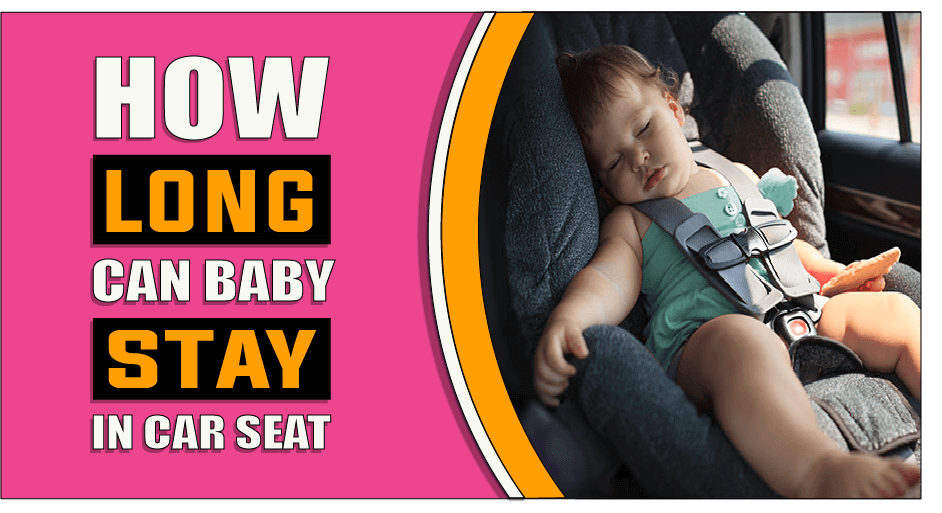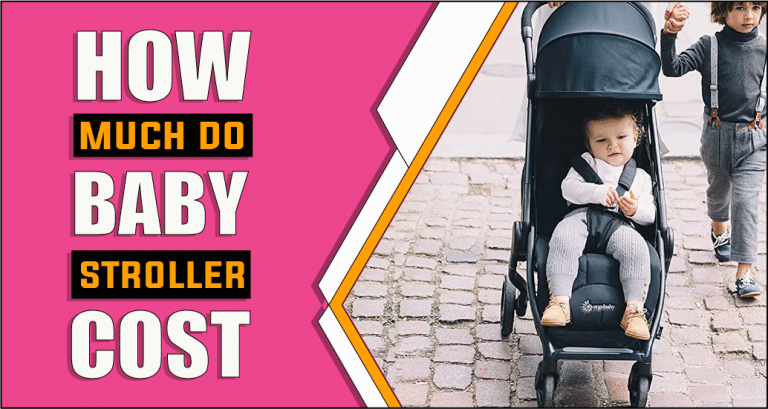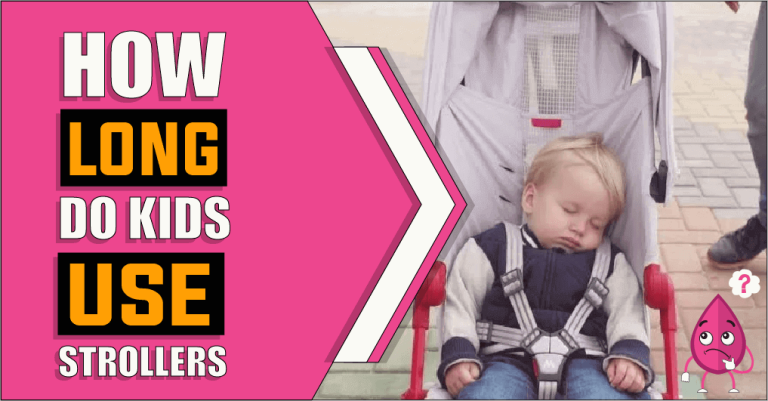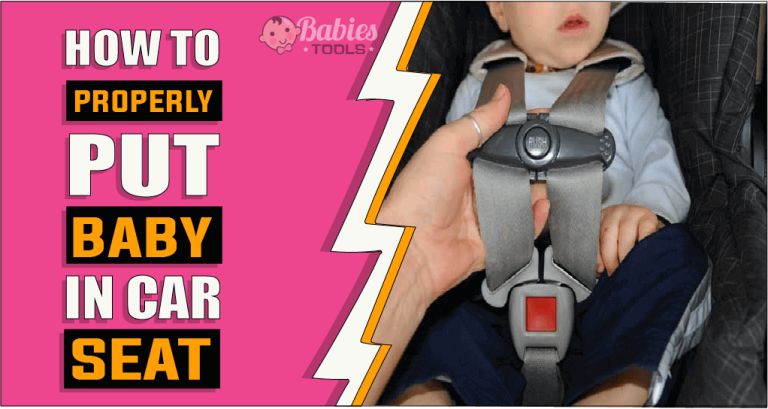How Long Can Baby Stay In Infant Car Seat – The Truth Reveals
As parents, we want to ensure our babies are safe in the car. Infant car seats provide protection that helps keep little ones secure when traveling on the road. However, there can be a lot of confusion around how long a baby should remain in an infant seat and when to switch to a more significant booster or convertible seat. To help you navigate making this decision for your own family’s safety, let’s dive into what you need to know about infant car seat usage and the factors that influence when your baby should transition out of their infant seat and into something more suitable for their size.

Let’s explore how long a baby can stay in an infant car seat
The American Academy of Pediatrics (AAP) recommends that all infants and toddlers ride in a rear-facing car safety seat until they are 2 years of age or reach the highest weight or height their car safety seat’s manufacturer allows. After that, they should ride in a forward-facing car safety seat with a harness for as long as possible, up to the highest weight or height allowed by their car safety seat’s manufacturer. Some states require children to stay in a booster seat until they reach a certain age or height. It is essential to check your state’s laws for exact requirements.
Once your child outgrows their forward-facing car safety seat with a harness, they should use a belt-positioning booster seat until the vehicle’s lap, and shoulder belt fit correctly, typically when they are 4 to 8 years old between 4’9″ tall and 57 inches tall. All children younger than 13 should ride in the backseat of vehicles for optimal safety.
It is essential to keep your child in the appropriate car seat or booster for as long as possible, up to the height and weight limit of the seat. Never switch to a different type of car safety seat until your child has outgrown the limits of their current one. It is also essential to read and follow all instructions with the car safety seat or booster and to have your child’s car safety seat installed by a certified Child Passenger Safety Technician. Check out the National Highway Traffic Safety Administration website for more car seat and boosters information.
What to consider when deciding how long to keep your child in their infant car seat?
When it comes to your child and their safety, nothing should be taken lightly. Deciding how long to keep your child in an infant car seat is an important decision that could mean the difference between life and death. Here are some things to consider when making this choice:
1. The weight of the infant:
Infant car seats are designed for babies up to a certain weight, usually between 22 and 35 pounds. Once your baby reaches the maximum weight limit of the seat, it’s time to upgrade.
2. The height of the child:
The American Academy of Pediatrics (AAP) recommends that children remain in rear-facing car seats until they reach the highest weight or height their car seat’s manufacturer allows. Generally, this means children should stay rear-facing until they’re at least two years old.
3. Comfort:
It is essential to keep your child comfortable in their infant car seat. Ensure straps are correctly adjusted to ensure a proper and snug fit. If your child is uncomfortable, it can be unsafe and distracting while on the road.
4. Age:
While children should remain rear-facing until they reach the maximum weight or height allowed by their car seat’s manufacturer, it is also essential to consider their age. Children between the ages of two and seven should remain in a forward-facing car seat with a harness.
5. Type of car seat:
When deciding how long to keep your child in an infant car seat, you will also need to consider the type of car seat they are using. Convertible seats can be used for children up to sixty-five pounds, and booster seats can be used for children up to one hundred twenty pounds.
6. Family lifestyle:
Finally, it is essential to consider the family’s lifestyle when making this decision. If your family travels often or takes long car trips, you may need a more durable car seat with higher weight limits.
Tips to Make Sure Your Baby Is Sitting Comfortably in the Car Seat?
Regarding car seat safety, ensuring your baby is seated correctly and comfortably is one of the most critical steps. Here are some tips that can help make sure your little one is safe and secure in their car seat:
1. Make sure the straps fit snugly:
It’s essential to ensure that the straps on your car seat fit snugly around your baby’s chest. You should be able to fit only one or two fingers between the harness and their body. The straps should also go through the slots at or below their shoulders and must never be put behind their back.
2. Ensure that the car seat is properly secured in the car:
You should always use the latch system or seat belts to ensure your car seat is securely fastened in the backseat of your car. The buckle should be positioned to stay secure and tight when you move the car seat around.
3. Choose a larger, more accommodating car seat:
You may want to invest in a larger car seat if your baby is multiplying. That way, they will have more room to move around and feel less constrained.
4. Make sure your baby has plenty of support:
You should ensure your baby’s head is correctly supported by either the car seat or a headrest. It will help ensure their neck muscles are supported and they remain comfortable during the ride.
5. Check the car seat frequently:
Inspecting your baby’s car seat regularly for any signs of wear or damage, such as frayed fabric or broken buckles, is essential. If you notice any of these issues, you must replace the car seat immediately.
Following these tips can help you ensure your baby is safe and comfortable during every ride in the car. Car seat safety is paramount for keeping your little one happy and secure!
Relevant Questions:
Babies should never be in an infant car seat for over 2 hours. Regular breaks from the seat are essential, allowing your baby to move around and stretch their legs. Switching between the infant car seat and another approved restraint system, like a convertible or booster seat, is best for longer trips. It will help keep your baby comfortable and safe on the road.
Generally, it is recommended that infants remain in a rear-facing car seat for as long as possible up to the height or weight limit of their specific car seat. Infants should not be in a car seat for more than two hours unless specified by the manufacturer. Depending on the type of car seat and your child’s size, you may be able to keep them in the car seat for up to four hours at a time. Check your car seat’s manual or contact the manufacturer for exact guidelines.
Conclusion Paragraph
In conclusion, asking yourself how long a baby can stay in an infant car seat is essential. When deciding on the length of your child’s time there. While every child is unique, manufacturers recommend keeping babies in infant car seats until they’re two years old or weigh more than 20 pounds. Additionally, try to ensure they sit comfortably by using head support, keeping them snugly fastened with the straps and harness, and not over-stuffing their clothing. Above all else, ensure their safety by checking the seat for recalls before use and taking it in for regular maintenance. With these tips in mind, you’ll have peace of mind knowing that your little one is safe and sound on every journey together!






